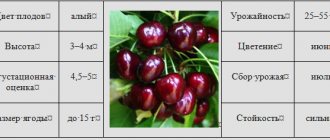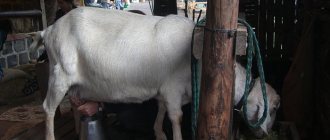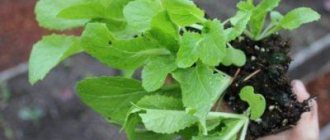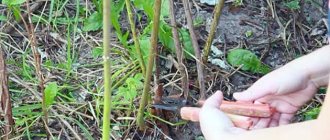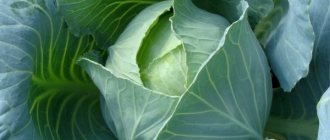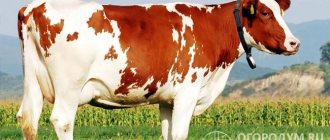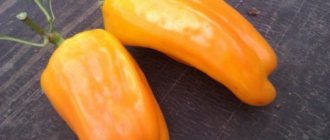To get a good volume of milk and not injure the animal, it is necessary to follow the correct milking technique. Before milking, the cow's legs and belly should be thoroughly wiped with clean straw or a rag, and the tail should be tied to the leg.
If you have never milked a cow yourself, or want to improve your skills, we recommend that you read the material in this article. From it you will learn how to properly prepare a cow and milk it using manual and machine methods.
- Manual milking method
- What kind of disease is this and how does it progress?
Preparing for milking
Without proper preparation, milking may not work; the cow will resist and will not want to give milk. The animal gets used to certain conditions and a consistent “ritual”. Preparation steps include:
- compliance with sanitary and hygienic conditions;
- establishing psychological contact;
- udder massage.
First of all, it is necessary to clean the barn of manure and dirt, especially the stall where milking will take place. This is necessary so as not to spoil the smell of the milk and to prevent dirt, straw, and manure from getting into it. Lay down clean bedding and it is advisable to ventilate the room. The milkmaid should be in a clean robe, her hands should be washed thoroughly with soap, and her head should be tied with a scarf.
The nuances of the milking procedure - regularity, frequency and timeliness
The regularity and frequency of milking of cattle depend on factors such as the breed of cattle, health status, structure of the mammary glands, and the frequency of milking.
On average, a cow produces about 70 liters of milk per day. Experts are of the opinion that cows should be milked at least two to three times a day. It has been experimentally proven that if you milk her less than twice, this will lead to a decrease in milk yield and udder diseases. The average milk flow rate should be at least 1 liter per 1 minute.
After a heifer reproduces, her milk volume increases. During this period of time, the number of procedures increases to five times a day.
It is advisable to milk at regular intervals, at the same time. If there is little production, then switch to milking three times a day.
Before milking the cattle, you need to clean the stall - remove the manure, lay out fresh bedding, and ventilate the room.
Features of the procedure:
- If the cow is young, then tie it up for safety reasons. It is advisable to also attach the tail to the hind limb so that she does not fan herself with it and accidentally touch the milkmaid’s face.
- The animal loves affection, so pet it, call it by name, make contact.
- Wash your hands with soap and change your clothes to clean ones. It is better to have a special robe or apron for these purposes. A headscarf or hat is required.
- Wash the udder with non-hot water and wipe with a dry and clean cloth.
- Get a massage. Do not rush to pull the nipples on an unprepared milk organ.
- The first milk streams should be directed into a separate vessel. It is advisable to do this through gauze or dark cloth in order to identify the presence or absence of diseases by the discharge of blood, mucus, characteristic of flake mastitis. And thus, the dirt accumulated during the walk is removed from the nipples.
Milking with fist
The fist milking method is the most common. The hands clasp the nipple so that the thumb is above the index finger and the little finger is on the tip of the nipple. Alternately squeezing the nipple causes the milk to move, and it flows into the bucket in a stream.
Then the fingers are relaxed to allow a new portion of milk to flow. It is advisable to collect the first streams in a separate container in order to promptly notice discharge in the form of blood and mucus and remove accumulated dirt.
Milking technology provides for a fast pace. At 80-90 compressions per minute, milk will be released almost continuously.
It is better to milk the front teats first and then move on to the rear ones. Under no circumstances should they be pulled or bent.
Prevention of mastitis in cows
At the end of each milking, a massage is given, which is necessary to prevent mastitis and allows you to milk out even small remaining milk. It is carried out using the following techniques:
- First, massage the right side of the udder, rubbing it from the top to the bottom, and then from the sides to the middle.
- During this technique, the udder needs to be slightly pushed, raised and lowered.
- Next, massage the left half in the same way and rub each quarter separately.
When the massage is finished, you can continue the milking process. This procedure allows you to collect the remaining milk, which contains a lot of fat. When performing a massage, the milk bucket should be set aside to prevent dirt and dust from getting into it. Preventive massage is done constantly, and is stopped only during startup.
What kind of disease is this and how does it progress?
Mastitis is a disease of the udder that spreads to one and sometimes two quarters. In this case, clots with a cheesy consistency and an unpleasant odor, sometimes mixed with blood, are squeezed out of the diseased part. The development of mastitis is facilitated by injuries, inept and incomplete milking, as well as non-compliance with hygiene rules (dirty bedding, milking with dirty hands, insufficient washing). Figure 5 shows the main external signs of mastitis and a preventive massage technique that will help prevent the development of the disease.
Note: If the female has developed mastitis, the affected quarter is carefully milked after two to three hours. In addition, it is imperative to contact a veterinarian to prescribe the correct treatment. Often, the doctor prescribes rubbing iodide, ichthyol or camphor ointment.
Figure 5. Signs of mastitis and the procedure for carrying out preventive massage
In some cases (for example, if the cow is slow-milking), the massage is repeated several times during one milking. Particular attention should be paid to preventive massage if the individual is prone to edema, suffers from mastitis, at the beginning of lactation and when the first heifer is milked for the first time.
Symptoms and forms of the disease
The presence of mastitis in a cow can be determined by the consistency of the milk. If there is an admixture of blood or clots in it, you need to measure the animal’s body temperature and check the udder. The presence of heat, growths and lumps indicates the presence of a disease. Provoking factors that can cause mastitis are shown in Figure 6.
There are several forms of mastitis, each of which manifests itself with certain symptoms.:
- Serous - most often appears after calving. Inflammation begins in the lymph nodes, the animal becomes lethargic, the quantity and quality of milk decreases;
- Latent mastitis occurs due to hypothermia and injury. With this form of the disease, blood and clots appear in the milk, and the animal often becomes aggressive;
- The purulent form is accompanied by a strong increase in temperature, the milk acquires an unpleasant taste and smell. In some cases, the udder becomes covered with numerous ulcers;
- Fibrous mastitis develops rapidly and leads to a severe decrease in the animal’s productivity, loss of appetite, and without treatment can be fatal.
Figure 6. Factors that provoke mastitis in cattle
Mastitis poses a danger not only from the point of view of milk production, but also the general health of the animal. Therefore, the prevention of mastitis in cows plays an important role, which helps prevent this dangerous condition.
Treatment options
It is not recommended to treat mastitis on your own, since each form of the disease requires the use of certain medications. The duration of treatment also differs, so if you notice the first signs of mastitis, you should immediately contact a veterinarian.
Traditional methods
There are also traditional methods to eliminate mastitis or reduce the risk of its occurrence. For example, an animal can be fed with a special collection of medicinal herbs, which not only increase milk production, but also have a beneficial effect on the condition of the body as a whole.
Two finger milking
This technique is only suitable for young cows with short nipples. The method is less convenient than milking with a full fist, but sometimes you have to use it.
Pinch milking technique: Holding the nipple with your index and thumb fingers, perform forward movements from top to bottom.
Manipulations should be gentle and smooth - the animal should not experience pain. The pinching technique can provoke stretching and traumatization of the teats - because of this, the cow can be irritable and even aggressive.
Recommendations for udder care
Proper care of the cow's udder plays a big role in the amount of milk yield. This concept includes hygiene procedures, antiseptic treatment and massage. Rinsing and gentle drying of the organ is performed both before and after milking.
Massage of the udder is usually done before milking begins. It allows you to calm the animal if it is nervous or afraid, and also speeds up the milking process itself and stimulates further milk production. It starts from top to bottom (along the lymph nodes and blood vessels).
It is necessary to knead the entire udder and nipples, starting with light, gentle strokes. Then a part of the udder (for example, the left one) is taken into the hands, folding them so that they resemble a bowl, and the thumbs of both hands begin to make massaging movements. The same procedure is performed for another part of the cow's mammary organ. When massaging your nipples, you need to be careful so that the milk does not flow prematurely.
The total duration of such a massage should be at least 30 seconds. Massage procedures are important after calving, when the udder is too hard. Massage helps prevent milk stagnation and reduces the risk of disease.
As for antiseptic treatment, it is carried out after complete milking of the udder contents. To do this, you can use almost any antiseptic, including chlorhexidine or iodine. In addition, there are special products, the application of which not only helps:
- remove milk residues from the udder;
- treat it to prevent the development of cracks;
- close the nipple canals and avoid the occurrence of a number of diseases.
Milking chair
The milkmaid's working area should be convenient and comfortable, because squatting can quickly get tired and harm the heifer. Therefore, to facilitate the procedure, you should purchase a special low stool or make a chair for milking cows with your own hands according to the drawing.
This device is stable. During the process, it allows you to choose a comfortable position, because the more milk the cow has, the longer it will have to be milked.
Which device to choose
The main criterion when choosing a milking machine is the number of livestock on the farm. For individual milking, there are mobile devices that allow you to milk one or two cows at the same time. This unit is easy to move and easy to maintain. The presence of a milking machine on small farms is a great help to the owners.
For large farms, there are milking machines that allow of several dozen cows During operation, the device collects milk from all cows into one container through special tubes. The milking technology remains the same, however, this method saves both people’s effort and time.
How often is a cow milked?
How many times a day to milk a cow is decided by its owner. The age and health of the animal are taken into account. The minimum frequency of milking is 2 times a day.
What you need to know when accustoming a cow to milking: First-calf heifers are milked 4 times a day for the first two weeks. Then the number of milkings is reduced to 3 a day.
The intervals between milkings must not be violated. If the mode is two times a day, the interval is no more than 12 hours; if it is three times a day, the interval is no more than 9 hours.
High-yielding cows need to be milked three times a day, this will allow: to maintain milk volumes at a high level; avoid stagnation of milk.
Bad habits during milking
During milking, sometimes unpleasant things happen: the cow starts kicking. This is usually explained either by the bad character of the animal, or by painful sensations. It is common for a cow to kick, fight, thrash, and prevent milking normally if she is feeling uncomfortable or scared.
The heifer may show aggression during milking if she was not allowed to get used to the process in advance, or if she was accustomed to milking too quickly and roughly.
What to do if a cow fights or kicks? In order to prevent the cow from fighting or kicking, it is necessary to accurately establish the cause of the behavior problem. If it is a bad character, the back leg can be tied to a fence post. If the cause is cracks in the skin of the nipples, it is necessary to treat them with ointment.
- It is difficult and dangerous to milk a cow by hand when the cow is kicking. You can wean yourself off a bad habit by placing a small whip or whip nearby. After each kick, the cow should be punished. Usually one or two times is enough for the animal to stop kicking.
- If the cow is still young, but tries to kick during milking, then you can try to train her in a more humane way. Before milking a cow, you need to put some treats in the feeder: carrots, pumpkins, fresh grass, apples, and cover your back with a towel soaked in cold water. This will calm the animal.
- Also, the cow will stand calmer if its legs are tangled. With tangled legs, even a very hard-working cow will stand quietly and quickly give up her habit. If you constantly confuse your legs, you should check the place of confusion for abrasions and wounds.
- But when a cow butts, a piece of rubber from a bicycle tire, about a centimeter wide, is put on the ear. You can also wrap your ear with twine. This is quite painful for the animal, but helps to quickly get rid of a bad habit.
Tips and tricks
Experienced livestock breeders and veterinarians give preference to milking machines when it comes to milking cows.
This method of milking is more carefree for the animal itself and guarantees full milking. In addition, this method helps to collect the milk clean, without any foreign substances.
To exclude the possibility of milk being contaminated with infections, product samples should be sent to the laboratory for the necessary tests. The answer to the question why it is so important to follow this rule is quite simple.
Thus, you can be confident in the composition of your own dairy products and their quality.
Maintaining a herd of cows in order to obtain high milk yields and produce dairy products is a rather labor-intensive and responsible craft.
Success in this industry depends on the right approach and the availability of special knowledge. Milking cows is one of the most important processes that you need to learn first.
Milking machine
There are several types of milking machines.
Units are classified according to technical characteristics, mobility, device and operating principle. Most devices have a similar structure and consist of the following parts:
- Milking cups. Four tube-shaped devices that attach to the udder teats.
- Tubes: some for transporting milk, others for air.
- Reservoir for storing milk.
- Pump.
- Collector.
- Pulsator or piston pump depending on the type of device.
The milking cups consist of a metal tube and an internal rubber chamber (nipple chamber). A sealed chamber (interwall) is formed between the two parts of the glass.
The operating principle of the unit is simple:
- The nipple chamber has a constant pressure generated by a vacuum.
- The pulsation of the vacuum causes compression of the nipple.
- When equal pressure arises in the interstitial and submammary chambers, milk begins to flow from the juice.
Depending on the method of obtaining milk, milking machines can be either suction or squeeze.
Completion
At the end of milking, the udder and teats are examined for cracks and damage, wiped with a clean rag and lubricated with Vaseline.
Wipe and inspect nipples
In the case when the cow does not allow you to approach her and, when trying to milk her, begins to thrash and jerk, you can tie her hind legs with a rope. If it is dangerous to approach from behind, another trick is used - a loop is thrown over the front leg. The other end of the rope is tied so that the leg is in the air. The cow loses its support and does not raise its hind legs and cannot kick.
Tips for using the equipment
When operating milking machines, every farmer should know that some elements require mandatory sterilization, which allows not only to maintain hygiene, but also to keep milk fresh longer. It is worth accustoming a cow to the automatic milking process at home as early as possible. If everything is done correctly, then she will not be afraid of the machine in the future, but will stand quietly until the breast pump completes the task. If you decide to use the technique on an adult cow, then you need to take into account that any animal gets used to the previously created conditions. Even a partial change in them leads to subsequent stress, in this case there may be less milk. The cow is trained slowly, at first simply turning on the unit in the room so that the animal adapts to the noise, while milking is carried out manually. You can connect a breast pump from the first day of calving; in this case, the cow is not milked manually at all. Before connecting the unit, inspect the udder for visible damage. The udder must be washed with clean and preferably warm water, then wiped with a towel. Each nipple is lightly massaged, then the udder is kneaded completely to improve the flow of milk and its fat content. There are also special hygiene requirements for milking machines. They must be kept clean and inspected for defects. Before connecting, you can milk a little milk from each cow in a trickle
The glasses are put on with care, each one should fit snugly against the nipple, and no hissing should be heard during operation. The presence of extraneous sound indicates a lack of tightness, and accordingly the milking will be of poor quality. Sometimes the glasses move out while the equipment is operating, then they are washed, the udder is massaged again and the apparatus is put on the cow again
Sometimes the housewife needs to finish milking the animal, but this usually happens on small farms when non-professional equipment is purchased. On large farms, units express milk entirely. After using the apparatus, the cow's teats are lubricated with Vaseline, and the glasses and hoses of the unit are washed with a disinfectant composition. To do this, the solution is passed through the entire system. Maintenance of milking machines is carried out once a month or every 2-3 months, but not less often than that. Regular technical inspection is mandatory as it can guarantee safety for the animal. They turn on the machine before they start milking the cow. At this time, you can wash and dry the udder. Upon completion of the work, first turn off the equipment and only then disconnect the glasses from the nipples, tilting them slightly to the side to let in air. If you try to remove the milking machine during suction, you can not only cause pain to the animal, but also damage the udder. Today there are many units on sale that do not require disconnection from the udder teats, since they disconnect independently when the pressure is turned off. You cannot use even the simplest unit without understanding the basic principles of its operation. Modern machines have a two-phase or three-phase operating cycle. When the phases alternate, milking does not cause unpleasant sensations in the animal. During operation, oxygen access is provided to the nipples, which reduces the pain effect. Although three-phase units are more expensive, they are much better. The quality of milk yield increases, so the milking machine pays for itself faster.
See below for the specifics of using lobe devices.
Technique for obtaining cow's milk
From childhood, everyone knows that the main function of a cow is to give milk. Like all mammals, it is produced in her to feed calves, appears after calving and comes constantly for 9 months while feeding lasts.
The cow should be milked immediately after calving; the volume of milk is significant. Leaving the cubs or stopping lactation is decided on an individual basis; this does not reduce the volume of milk production. The exact amount of milk is influenced by several factors:
- quality of keeping the animal;
- cow diet;
- milking frequency;
- cow milking technology.
It is important to observe the dry period - 2 months before the new calving, when the cow must gain strength before the birth of her cubs, milking is contraindicated for her.
The frequency of milking is determined by each owner independently. After calving, the procedure can take place 4-5 times a day, then the intervals between milkings gradually increase.
The acceptable number of milkings per day is 3; the best time for this procedure is morning and evening. If a cow kicks, then you need to find contact with her, persuading her with gentle words.
An important step is udder massage
In order to stimulate milk production, the milker should massage the udder for about a minute. At this time, the cow produces a hormone that relaxes the muscles and sphincters of the nipples. Thanks to this, you will be able to milk all the milk completely.
Neglecting massage will lead to the fact that the amount of milk will inevitably begin to decrease.
The procedure consists of lightly stroking the right and left sides of the udder along the width and length. At the same time, you can examine the cow’s mammary gland for damage and seals.
Massage allows you to prepare the animal, ensure full milk yield, increase milk yield, and prevent mastitis.
